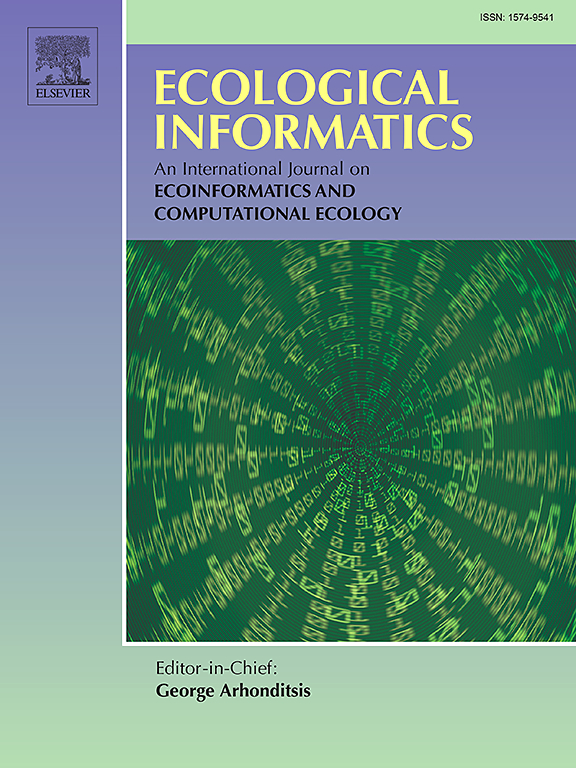使用机器学习工具进行微塑料颗粒表征的经济有效方法
IF 7.3
2区 环境科学与生态学
Q1 ECOLOGY
引用次数: 0
摘要
包括颗粒在内的微塑料是海滩上的持久性污染物,对生态和环境构成了相关挑战。它们在海洋和沿海环境中的广泛存在危及生态系统,威胁海洋生物,并有进入食物链的风险。有效的微塑料管理需要可靠的方法来识别和分类,但所需设备的高成本阻碍了大规模实施。人工智能为聚合物分析提供了一个很有前途的解决方案。虽然机器学习技术已经证明了微塑料自动化分类的潜力,但现有的方法往往依赖于需要大量输入变量的复杂模型,限制了它们的实际应用。本文介绍了一种使用随机森林模型进行颗粒聚合物分类的简化方法,该模型需要一组有限的变量进行训练。该方法在保持较高分类性能的同时降低了模型复杂度,强调简单、快速和高效。该方法在从西班牙、葡萄牙和意大利Vulcano岛海岸收集的不同颗粒样品上进行了测试。结果突出了所提出的模型的鲁棒性及其在不同环境背景下的适用性。通过平衡精度和计算效率,该方法是一种实用的颗粒分类工具。这种简化的方法可以在微塑料管理和减轻污染方面向前迈出重要一步,有助于制定成本效益高、可扩展的解决方案,以解决微塑料对环境的影响。本文章由计算机程序翻译,如有差异,请以英文原文为准。

Cost-effective approaches for microplastic pellets characterization using a machine learning tool
Microplastics, including pellets, are a persistent pollutant on beaches that pose relevant ecological and environmental challenges. Their widespread presence in marine and coastal environments endangers ecosystems, threatens marine life, and risks entering the food chain. Effective microplastic management requires reliable methods for their identification and classification, yet the high cost of required equipment hinders large-scale implementation. Artificial intelligence offers a promising solution for polymer analysis. While machine learning techniques have demonstrated potential in automating microplastic classification, existing approaches often rely on complex models requiring numerous input variables, limiting their practical application. This paper introduces a simplified methodology for pellet polymer classification using a Random Forest model requiring a limited set of variables for training. The approach reduces model complexity while maintaining high classification performance, emphasizing simplicity, speed and efficiency. The method was tested on different pellet samples collected from the coasts of Spain, Portugal and Vulcano Island (Italy). The results highlight the robustness of the proposed model and its suitability to be applied in diverse environmental contexts. By balancing accuracy with computational efficiency, the proposed approach represents a practical tool for pellet classification. This streamlined methodology can offer a significant step forward in microplastic management and pollution mitigation, contributing to the development of cost-effective, scalable solutions for addressing the environmental impacts of microplastics.
求助全文
通过发布文献求助,成功后即可免费获取论文全文。
去求助
来源期刊

Ecological Informatics
环境科学-生态学
CiteScore
8.30
自引率
11.80%
发文量
346
审稿时长
46 days
期刊介绍:
The journal Ecological Informatics is devoted to the publication of high quality, peer-reviewed articles on all aspects of computational ecology, data science and biogeography. The scope of the journal takes into account the data-intensive nature of ecology, the growing capacity of information technology to access, harness and leverage complex data as well as the critical need for informing sustainable management in view of global environmental and climate change.
The nature of the journal is interdisciplinary at the crossover between ecology and informatics. It focuses on novel concepts and techniques for image- and genome-based monitoring and interpretation, sensor- and multimedia-based data acquisition, internet-based data archiving and sharing, data assimilation, modelling and prediction of ecological data.
 求助内容:
求助内容: 应助结果提醒方式:
应助结果提醒方式:


